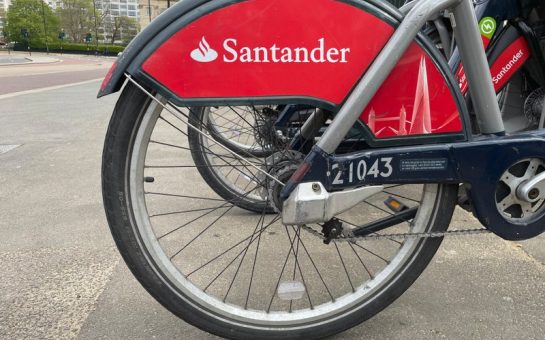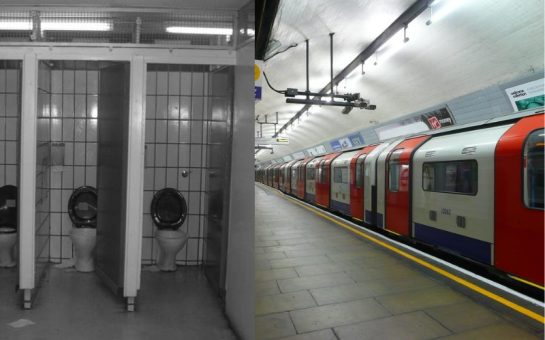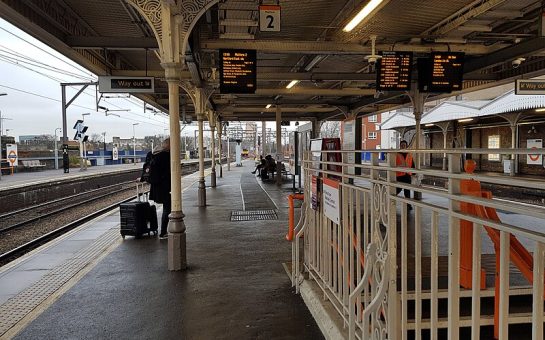More than 25% of all London Underground signal failures over the last four years have occurred on the District line.
Statistics from a Freedom of Information request to Transport for London (TfL) showed the District line has seen 1,192 signal failures of a total 4,706 across the network between January 1 2015 and March 17 2018.
The line, which has westbound services terminating at Wimbledon, Richmond and Ealing Broadway, saw 352 signal failures in 2015, 358 in 2016 and 387 in 2017.
Asif Malik, 73, uses the District line four times a week and said: “That doesn’t surprise me, 80% of the time it’s fine, 20% of the time there are problems.”
It’s a view echoed by Zeba Shaikh, 38, who has lived in Wimbledon all her life and is not surprised by the statistics.
She said: “It’s okay but it’s not great. There are a lot of delays and a lot of signal failures and it takes a long time to get into Wimbledon.
“I’ve always got the District line and it’s always been bad. I’m on maternity leave but everyday, I used to go to Hammersmith, so it’s pretty bad.”
The District line, which has the most stations of any line with 60, had the highest number of signal failures for any line on the London Underground for each year.
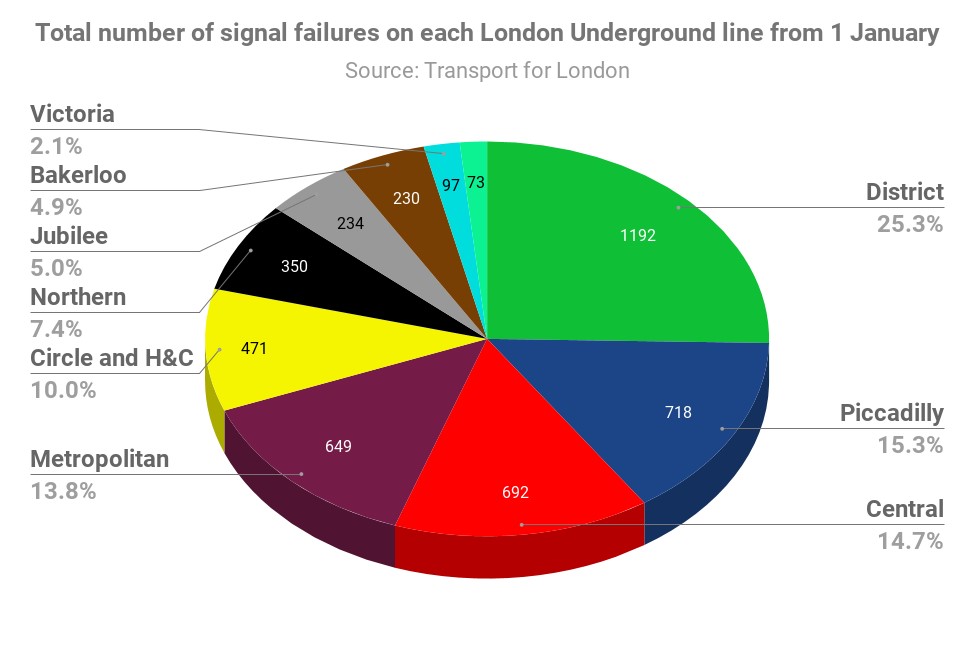
The District line’s 1,192 signal failures since 1 January 2015 makes up 25.3% of all signal failures on the London Underground network in that time
The Central line had the second-most signal failures in 2015 with 238, but the last two calendar years have seen the Piccadilly line follow the District line with 223 in 2016 and 272 in 2017.
At the other end of the spectrum, the Waterloo & City line had the fewest signal failures in all three calendar years, closely followed by the Victoria.
But this comes as no surprise to one commuter, who asked to remain anonymous.
She said: “It’s not as reliable as the other lines. You have to factor that into your travelling because it is such a common occurrence. You just can’t rely on getting anywhere that quickly because the District line is either faulty at Southfields or Parsons Green.”
Part of the reasoning behind the District line’s high level of signal failures is because it is run by manual signaling rather than the automated system used on lines such as the Northern and Victoria lines.
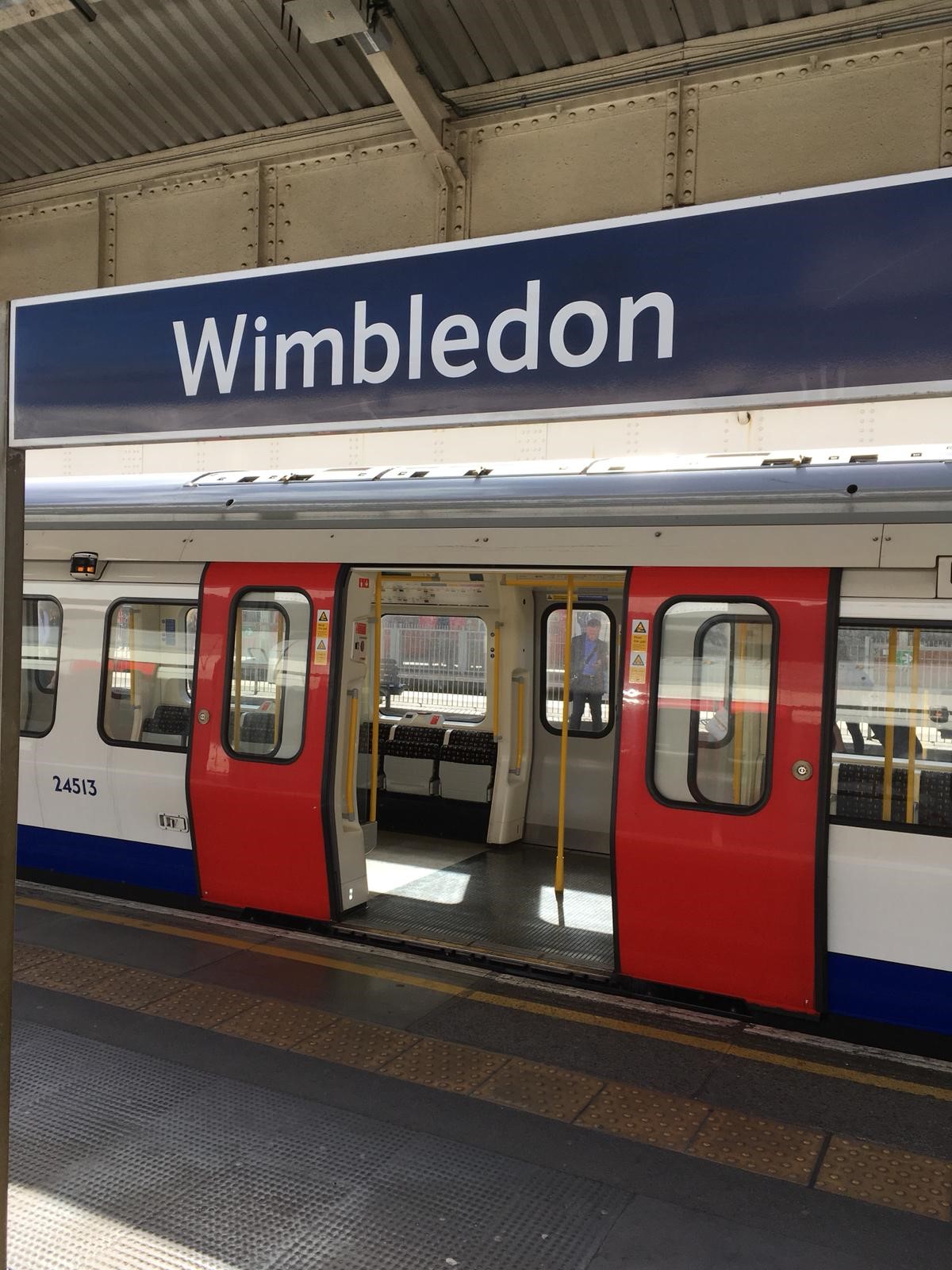
The westbound District line has branches terminating in Wimbledon, Richmond and Ealing Broadway in south west London
But there is hope for customers, with the Four Lines Modernisation programme underway to update the District, Circle, Hammersmith & City and Metropolitan lines and the new Thameslink and Elizabeth line will ease the pressure on the lines currently struggling.
The lines to be improved make up 40% of the tube network and carry 1.3million passengers everyday.
TfL claim the improvements, through the Four Lines Modernisation programme, will boost capacity on the District, Circle, Hammersmith & City and Metropolitan lines by 33%.
The current, manual signalling, some of which has been in place since 1926, service is to be replaced by an automated service, similar to the technology introduced to the Jubilee and Northern lines in recent years and should lead to fewer delays.
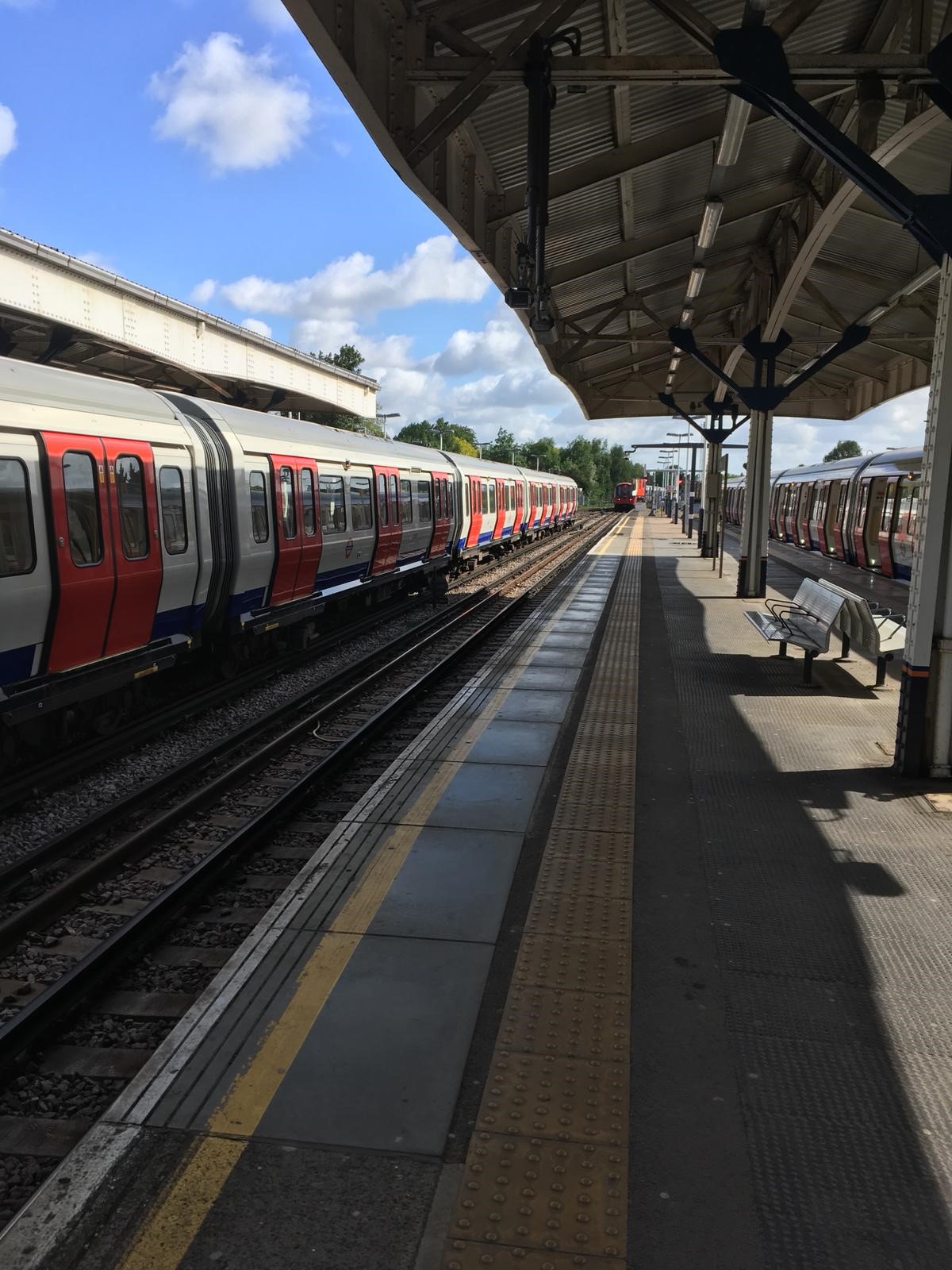
The Four Lines Modernisation programme should see an improvement in the performance on the District line
London TravelWatch is the independent watchdog representing passengers using the transport network in London and operations and communications manager Richard Freestone-Clough said: “This is obviously not a good situation to be in, but it is good that the Four Lines Modernisation is progressing.
“Work is in hand to replace and update the current system. The opening of the Thameslink and Elizabeth line routes later this year and next will provide some alternative routes to the Piccadilly and District lines.
“Services should become more reliable with the replacement of old and obsolescent equipment and this should also allow an increase in the number of trains operated, increasing overall capacity.”
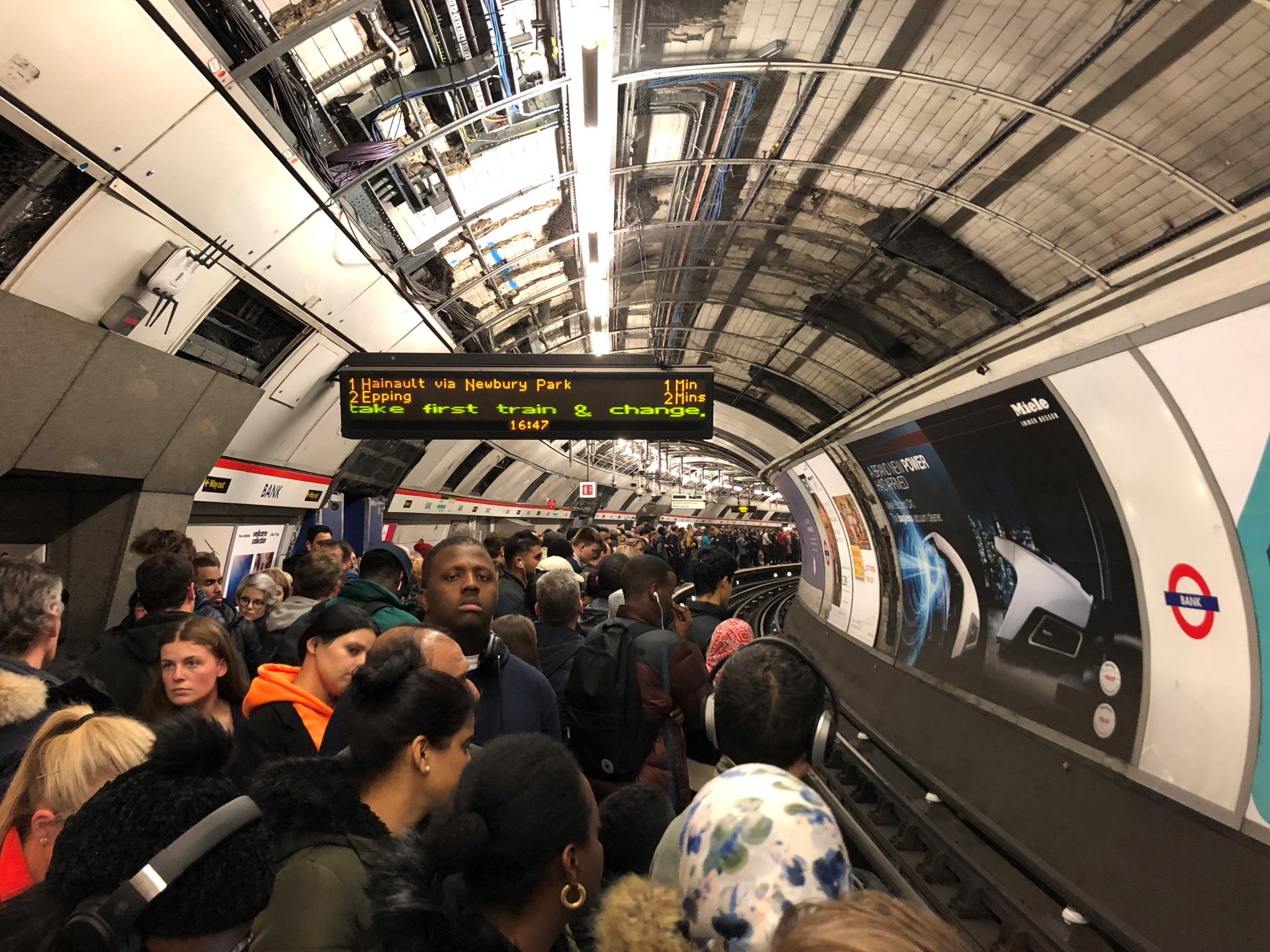
A signal failure during the evening rush hour on the Central line leads to a crowded platform at Bank
George Willett, in his eighties, is content with the service currently provided on the District line, which he uses twice a week to go from Wimbledon to Paddington.
He said: “Broadly speaking I’m completely happy and if it’s not working I just hop onto the overground to Waterloo and catch the Bakerloo to Paddington so there’s no restriction on my activities at all.
“I’m a happy bunny. I hope the changes are for the better and I like the new trains as well.”
Not only does the District line cater for a quarter of all signal failures on the London Underground, it is also expected to see a rise in the number of them for a third consecutive year.
There were 95 signal failures between 1 January and 17 March 2018.
If that rate continues for the remainder of this year, the total is projected to reach a staggering 456, 1.25 every day or one every 15 hours of service.
But based on the same principle, there would be a total of 1,421 signal failures on the London Underground this year, lower than the previous three years.
There were 1,493 in 2015, 1,453 in 2016 and 1,464 in 2017 across the whole network.
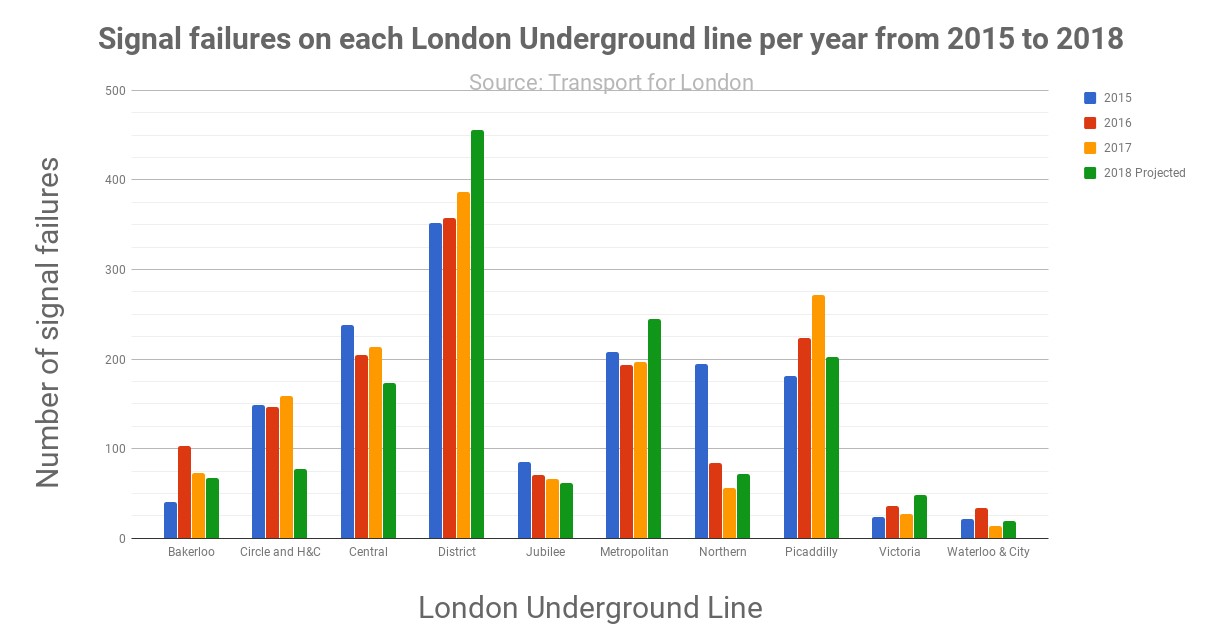
The District line is projected to have 456 signal failures in 2018 based on the first 76 days of the year, almost 200 more than any other line
But this comes as no surprise to one anonymous commuter who uses the District line everyday. She said: “It’s not as reliable as the other lines. You have to factor that into your travelling because it is such a common occurrence.
“You just can’t rely on getting anywhere that quickly because the District line is either faulty at Southfields or Parsons Green.”
It is clear that the District line is the worst-performing line of all across the London Underground.
Customers and TfL alike will be hoping the updates underway will have the desired effect and improve the service across the network, especially on the District line.
Although responsive to communication, TfL did not provide a comment.
The bad news is the updates are not expected to be completed until 2023 so there are five more years of signal failures to come, which could mean another 2,500 signal failures between now and then, possibly more if the current trend continues to rise.

